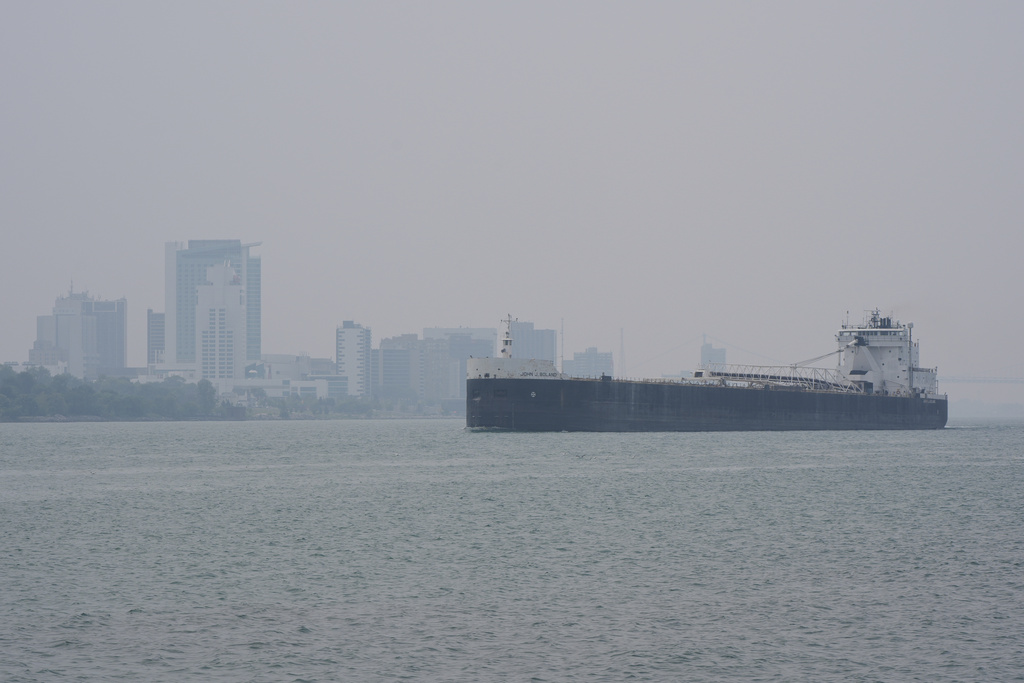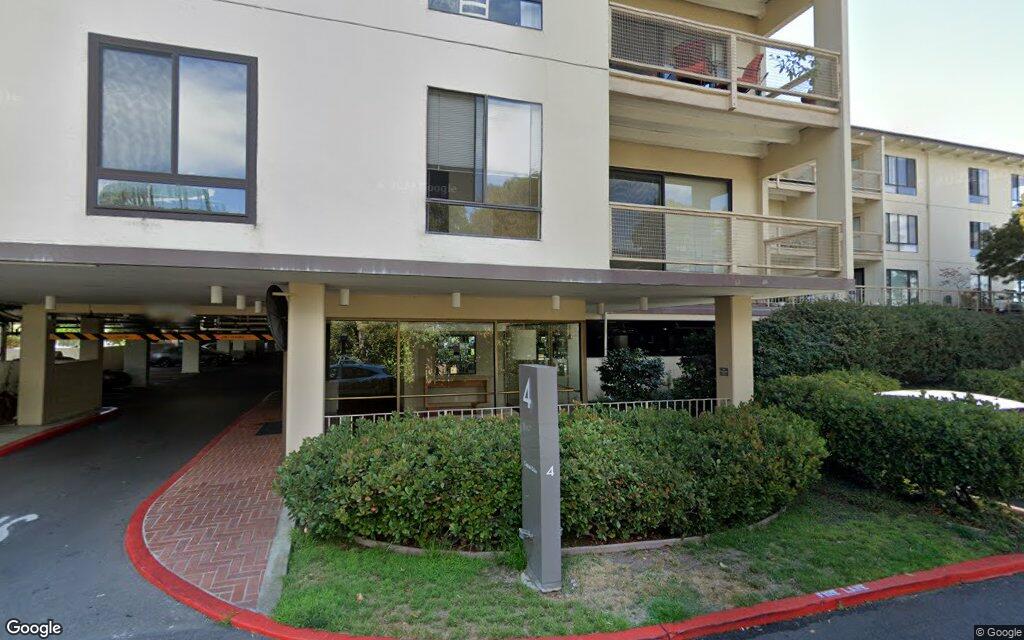Robert Tuttle, Brian K Sullivan and Danielle Bochove, Bloomberg
The hazy air hovering over US metropolises, including Chicago and New York, this summer is reminding Americans of just how connected they are with their northern neighbor, regardless of how much relations have deteriorated under President Donald Trump.
Canadian provinces have evacuated towns and struggled to contain the second-worst wildfire season in 30 years, while residents of some US cities have endured unhealthy air as smoke from the blazes wafts across the border.
The scenes of smoke-choked cities are reminiscent of 2023, when skies turned orange over New York City amid what was Canada’s worst wildfire season on record. They also come as the US West’s wildfire season worsens, with blazes burning in California, Arizona and Nevada, and France deals with the fallout from its worst fires in seven decades, including smoke-damaged grapes across wine-growing regions.
The cross-border smoke drifting from Canada to the US, though, poses a particularly unique geopolitical issue. With climate change increasing the odds of extreme fire weather, it could mean more seasons of flames and smoke ahead. But there are ways to reduce forests’ flammability.
What’s happening with the fires right now?
As of Friday, 718 active fires are burning across Canada, nearly 500 of which are out of control. Wildfire activity kicked off in Canada’s prairie provinces in May with Saskatchewan and Manitoba declaring emergencies. Major fires also broke out in the western provinces of British Columbia and Alberta, with one blaze in the oil sands region temporarily curtailing about 350,000 barrels a day of oil production. Since then, fires have spread across the country, burning as far east as Newfoundland.
In 2023, fires in provinces including Quebec were the source of much of the smoke that blanketed the eastern US. Now, fires in the Canadian prairies are the source of much of the smoke drifting into the US Midwest.
Canadian fires burned a total of 7.2 million hectares (17.8 million acres) of forest as of Friday, the second-largest extent in records extending back to 1972, according to Canadian Interagency Forest Fire Center and Natural Resources Canada data. The 2023 season set the record with 14.6 million hectares burned and included fires so intense that they smoldered underground for the winter.
How does wildfire smoke affect air quality and health?
Air pollution of all forms can be detrimental to health, but the tiny particles in smoke are particularly pernicious. Wildfire smoke is 10 times as toxic as regular air pollution, according to researchers at Stanford University.
Soot and other small particles can lodge in crevices of organs, including lungs and arteries, and cause inflammation, according to Vin Gupta, a practicing pulmonologist and medical spokesperson for the American Lung Association. Chronic smoke exposure can contribute to asthma, cancer, dementia and even cause death. Those with preexisting health conditions, the elderly and very young are particularly at risk.
A study published in June looking at US Medicare recipients found wildfire smoke exposure led to more than 20,000 additional heart failure cases a year. Pregnant women exposed to wildfire smoke showed a higher risk of premature birth and low birth weight in newborns, according to a 2023 study focused on Australia.
How do we measure air quality?
Air quality is typically measured using an index that standardizes the concentration of pollution in a given location. Stations around the world continuously take samples and provide real-time updates. We know, for example, that the air quality index, or AQI, hit 161 in Duluth, Minnesota, on Wednesday as smoke pushed into the region.
While an AQI below 50 is considered good air, anything above 151 is considered unhealthy and will likely have some impacts on the general public. Anything that climbs above 300 is likely to affect nearly everyone breathing the air, while readings between 101 and 150 are considered unhealthy for sensitive groups, including children and older adults. In areas where the most intense fires are burning, the AQI climbed as high as 500 on Thursday.
State and provincial governments track air quality, as do national governments in both countries. The data used to create AQI readings comes from air monitors found in a variety of locations, ranging from schools and businesses to TV stations. Some are used to track air quality near roads or sites prone to pollution, such as petrochemical facilities.
How have the fires affected international relations?
Wildfire smoke is worsening relations that were already at their lowest point in decades after Trump imposed tariffs on Canada early in his term and repeatedly referred to the country as the 51st state.
A chorus of Republican lawmakers from the Midwest has complained about the smoke. That includes six members of Congress who wrote a letter to Canada’s ambassador to the US last month claiming a lack of active forest management was driving the “suffocating” wildfire smoke their constituents were dealing with. State-level lawmakers have also voiced concerns.
In response, Manitoba Premier Wab Kinew accused the US lawmakers of “trivializing” the explosive blazes, while praising US firefighters who are assisting Canadian efforts to control the blazes.
Are Canada’s forest management practices to blame?
Canada is exceedingly efficient in fire monitoring and control compared to the US, said Mark Ashton, a dean of Yale University’s Forest School. But Canada’s massive swaths of forested land, a sparse population and limited infrastructure mean the country is constrained in its ability to respond to all blazes.
“In the most remote, difficult to access regions, you have no choice but to monitor and let burn,” Ashton said, adding that such an approach is pretty much the same strategy used in remote areas of Alaska. Indeed, of the roughly 500 uncontrolled blazes in Canada, 305 were being monitored.
Still, the country lacks a consistent approach to assessing risk, one that guides wildfire responses, and funding for wildfire prevention, mitigation and preparedness hasn’t kept up with an increasing need, researchers wrote a 2020 study.
Is there anything more that can be done to prevent or limit fires?
Canada has been making some changes to its approach to wildfires, including integrating Indigenous cultural burning practices and, in British Columbia, planting more broadleaf trees that don’t burn as easily rather than conifers in areas where timber has been harvested near urban locations, said Stefana Dranga, a wildfire research officer at Natural Resources Canada. Canada is also borrowing techniques from the US, including the use of pre-defined strategic fire management zones, a tool for identifying land features that can stop or slow wildfires for suppression, she said.
Cutting greenhouse gas pollution would also help lower the risk of explosive fires in the long term. The boreal forest stretching across northern Canada and other Arctic countries is particularly vulnerable to rising temperatures.
“The fires in the region have been amplified by changing climate that has increased the degree and length of these hot and dry periods,” Ashton said.
While cutting greenhouse gas emissions to zero wouldn’t immediately decrease fire risk, it would pay dividends in the decades to come.
What will climate change mean for Canadian wildfires?
The smoky summers are only poised to worsen in the years ahead as the globe gets hotter, according to Liam Buchart, fire weather specialist at Natural Resources Canada. “As that warmth continues to build up in our climates, it’s just making the fire season a bit more volatile.”
Boreal forests sequester billions of tons of carbon. Yet as temperatures and fire risk both rise, that creates the risk that the forests go from being a carbon sink to a source of planet-warming emissions. In 2023, Canadian wildfires spewed out more carbon dioxide than the entire country of Mexico does in a year.
That will have grave impacts on public health as well. “We’re girding for a reality where people will be sicker because more parts of the year will be warmer and exposure to the wildfire smoke will happen in unnatural times of the year,” Gupta said. “It’s not good for the body. “All expectations are that this is going to get a lot worse before there’s any hope of it getting better.”
More stories like this are available on bloomberg.com
©2025 Bloomberg L.P.
<









